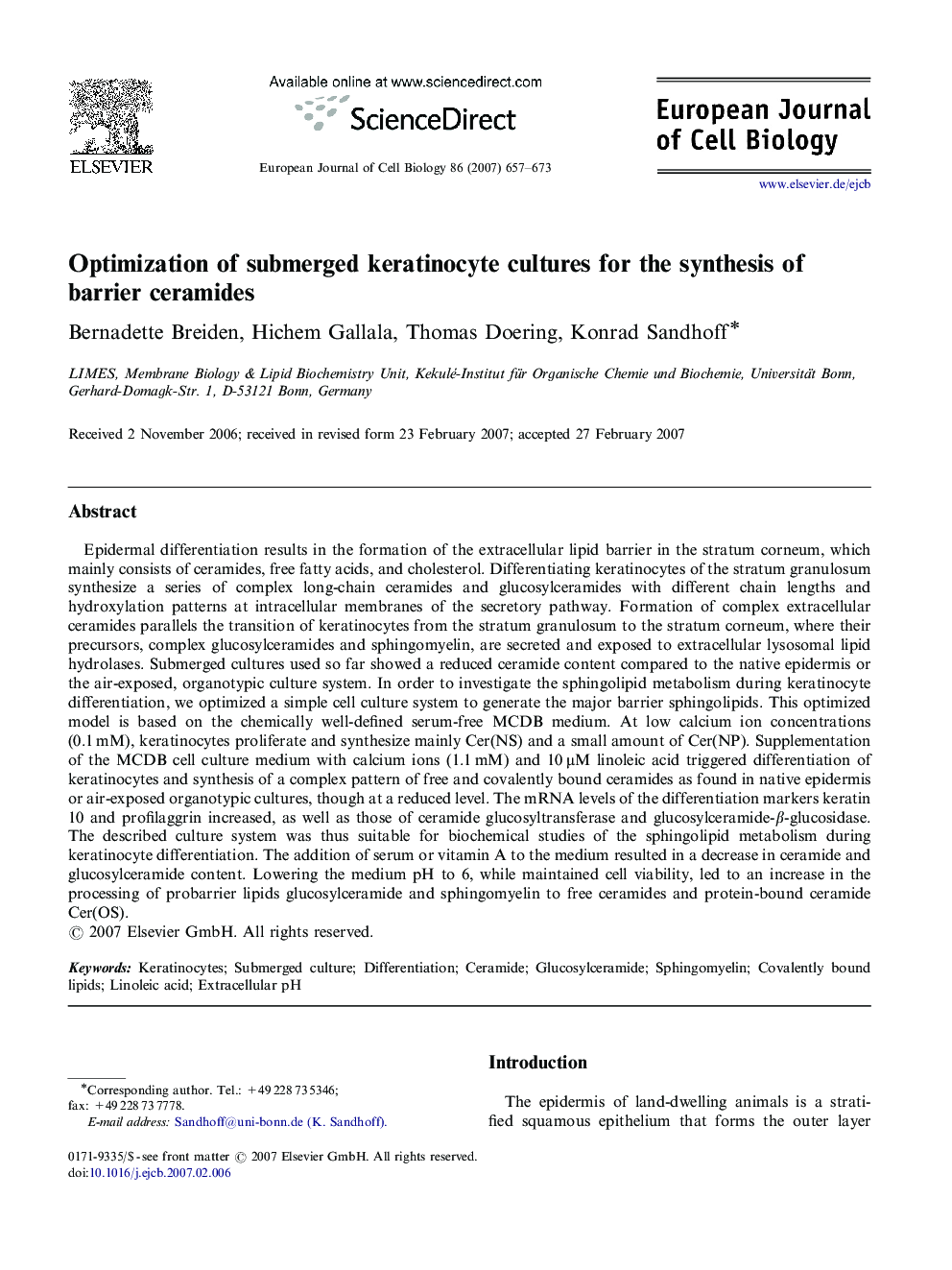| کد مقاله | کد نشریه | سال انتشار | مقاله انگلیسی | نسخه تمام متن |
|---|---|---|---|---|
| 2179151 | 1549756 | 2007 | 17 صفحه PDF | دانلود رایگان |

Epidermal differentiation results in the formation of the extracellular lipid barrier in the stratum corneum, which mainly consists of ceramides, free fatty acids, and cholesterol. Differentiating keratinocytes of the stratum granulosum synthesize a series of complex long-chain ceramides and glucosylceramides with different chain lengths and hydroxylation patterns at intracellular membranes of the secretory pathway. Formation of complex extracellular ceramides parallels the transition of keratinocytes from the stratum granulosum to the stratum corneum, where their precursors, complex glucosylceramides and sphingomyelin, are secreted and exposed to extracellular lysosomal lipid hydrolases. Submerged cultures used so far showed a reduced ceramide content compared to the native epidermis or the air-exposed, organotypic culture system. In order to investigate the sphingolipid metabolism during keratinocyte differentiation, we optimized a simple cell culture system to generate the major barrier sphingolipids. This optimized model is based on the chemically well-defined serum-free MCDB medium. At low calcium ion concentrations (0.1 mM), keratinocytes proliferate and synthesize mainly Cer(NS) and a small amount of Cer(NP). Supplementation of the MCDB cell culture medium with calcium ions (1.1 mM) and 10 μM linoleic acid triggered differentiation of keratinocytes and synthesis of a complex pattern of free and covalently bound ceramides as found in native epidermis or air-exposed organotypic cultures, though at a reduced level. The mRNA levels of the differentiation markers keratin 10 and profilaggrin increased, as well as those of ceramide glucosyltransferase and glucosylceramide-β-glucosidase. The described culture system was thus suitable for biochemical studies of the sphingolipid metabolism during keratinocyte differentiation. The addition of serum or vitamin A to the medium resulted in a decrease in ceramide and glucosylceramide content. Lowering the medium pH to 6, while maintained cell viability, led to an increase in the processing of probarrier lipids glucosylceramide and sphingomyelin to free ceramides and protein-bound ceramide Cer(OS).
Journal: European Journal of Cell Biology - Volume 86, Issues 11–12, 3 December 2007, Pages 657–673